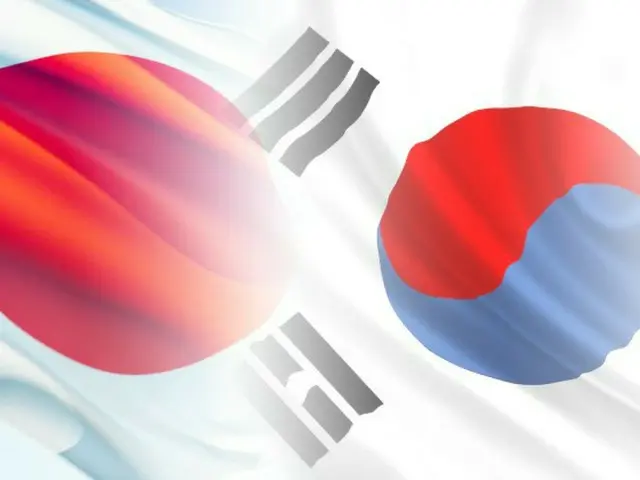The ship exploded and sank in Maizuru Bay, killing many of the Korean Peninsula former member workers on board. For many years, the Japanese government had not acknowledged the existence of the passenger list, but this year, a Japanese journalist
In response to a request for disclosure of information, multiple lists were disclosed. The South Korean Ministry of Foreign Affairs said, "The lists contain a lot of personal information about the victims," and "Domestic laws and regulations prohibit the viewing or disclosure of information."
The government plans to provide the documents to those who have the right to do so. Yonhap News Agency said, "The reason for providing the documents just before Prime Minister Fumio Kishida's visit to South Korea on the 6th is that it is the result of the recent trend of improving South Korea-Japan relations.
He explained that "there are some views that have emerged," but added that "it seems inevitable that criticism will be leveled that the Japanese side has in effect concealed the documents."
On the night of August 22, 1945, the Imperial Japanese Navy transport ship Ukishima Maru was engaged in railroad construction work in the Shimokita Peninsula of Aomori Prefecture.
The ship departed from Ominato in Mutsu City, Aomori Prefecture, carrying Korean workers and their families. It was heading for Busan, South Korea, but suddenly exploded and sank on the 24th in Maizuru Bay off the coast of Shimosabaga, Maizuru City, where it had made a port call.
According to the Japanese government, 524 Koreans and 25 Japanese died. However, survivors and relatives of the victims claim that the death toll is in the thousands.
The unclaimed remains are still there. This incident was not initially reported in Japan, but was brought to light by South Korean media the following month.
The cause of the Ukishima Maru explosion is believed to be a mine laid by the U.S. military, but the exact cause is unknown.
In 1992, 80 Korean survivors and bereaved families filed a class action lawsuit against the Japanese government, seeking approximately 2.8 billion yen in compensation, but in November 2004, the Supreme Court's Third Petty Bench dismissed the plaintiffs' appeal.
The Osaka High Court ruling (May 2003), which resulted in the plaintiffs' complete defeat, was finalized. The Japanese government had also maintained for many years that the passenger list for the Ukishima Maru "did not exist." However, this year
In May, in response to a request for information disclosure by a journalist, the government released the list of passengers for the first time.
Three documents were made public: the "Report on the passenger list" by the 4th Division Chief of the Navy Facilities Department (333 people, August 19, 1945); and the "Ukishima Maru passenger list" by the Ominato branch of Nippon Express (144 people, August 22, 1945).
The documents were made public, but individual names had been blacked out. Also, only a portion of the documents were made public. In May, the Ministry of Health, Labor and Welfare said that there were "roughly 70 documents" that were called "lists" of passengers and others.
Following the discovery of the existence of the list, the Ministry of the Interior and Safety of South Korea, which is in charge of returning the remains of wartime mobilization victims, requested the submission of related materials through the Ministry of Foreign Affairs.
On the 5th, the Ministry of Health, Labor and Welfare provided the South Korean government with a list of some of the passengers. According to Yonhap News, the ministry provided only one of 75 documents that had been internally investigated.
The ministry plans to provide the remaining documents to the South Korean side once it has completed its investigation. There are still many mysteries surrounding the case, and according to Yonhap, the Ministry of Foreign Affairs has not yet received all of the documents from Japan.
"In South Korea, a 2007 law was enacted to recognize the victims of forced labor during the Japanese colonial period as "victims of forced labor."
If they are recognized, the government will provide them with compensation. This list will serve as evidence that they were victims, and it may lead to compensation being paid to their surviving families."
However, there have been cases where applications for compensation were rejected or denied due to a lack of supporting documents, and the government plans to use this list when re-examining whether or not compensation will be paid.
"We will continue to make efforts to ensure that the smooth implementation of the measures and the investigation into the truth are carried out smoothly," he said. Prime Minister Kishida, who is set to step down this month, visited South Korea on the 6th and met with President Yoon Seok-yeol.
The two sides held talks, but South Korean media reported that the list of passengers, which the Japanese government had said "did not exist" for many years and which it finally released in response to a request for disclosure of information this year, was given to the South Korean side just before Prime Minister Kishida's visit to South Korea.
The Financial News reported that "there is a view that political considerations were at work." Meanwhile, the Ministry of Foreign Affairs said that there was "no connection" between Prime Minister Kishida's visit to South Korea and the provision of the passenger list.
They denied the allegations, saying it was "the result of discussions based on the improvement of Korea-Japan relations."
2024/09/10 14:25 KST
Copyrights(C)wowkorea.jp 5

